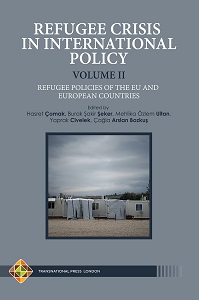Asylum Policy of Republic of Serbia: The Case of The Humanitarian Route
Asylum Policy of Republic of Serbia: The Case of The Humanitarian Route
Author(s): Ayşegül Bostan
Subject(s): Migration Studies, Asylum, Refugees, Migration as Policy-fields
Published by: Transnational Press London
Keywords: Migration Series; EU; European Union; immigrants; international policy; migration policy; refugee crisis; refugee law; refugee policy; refugees;
Summary/Abstract: In a general sense the former Yugoslavia, including Serbia, Croatia, Bosnia-Herzegovina (BiH), Kosovo, Macedonia, Montenegro and Slovenia, has been regarded as a country of emigration in terms of internal and external migration. In the late 1970s, Slovenia was exposed to guest-workers coming from southern Yugoslavia. The reason of such internal migration was both the opportunity for ex-Yugoslavian people to find a job in industrial cities of Slovenia and the economy of Slovenia being better than other ex-Yugoslavian states.2 When the civil war broke up in Yugoslavia in the 1990s, the world witnessed the forced displacements of Yugoslav citizens and the Western European countries were suddenly subjected to the wave of refugees. Therefore, it could be inferred that ethno-national conflict or deep economic crisis led to waves of migration and refugees.
Book: Refugee Crisis in International Policy - Volume II Refugee Policies of the EU and European Countries
- Page Range: 253-267
- Page Count: 15
- Publication Year: 2021
- Language: English
- Content File-PDF

